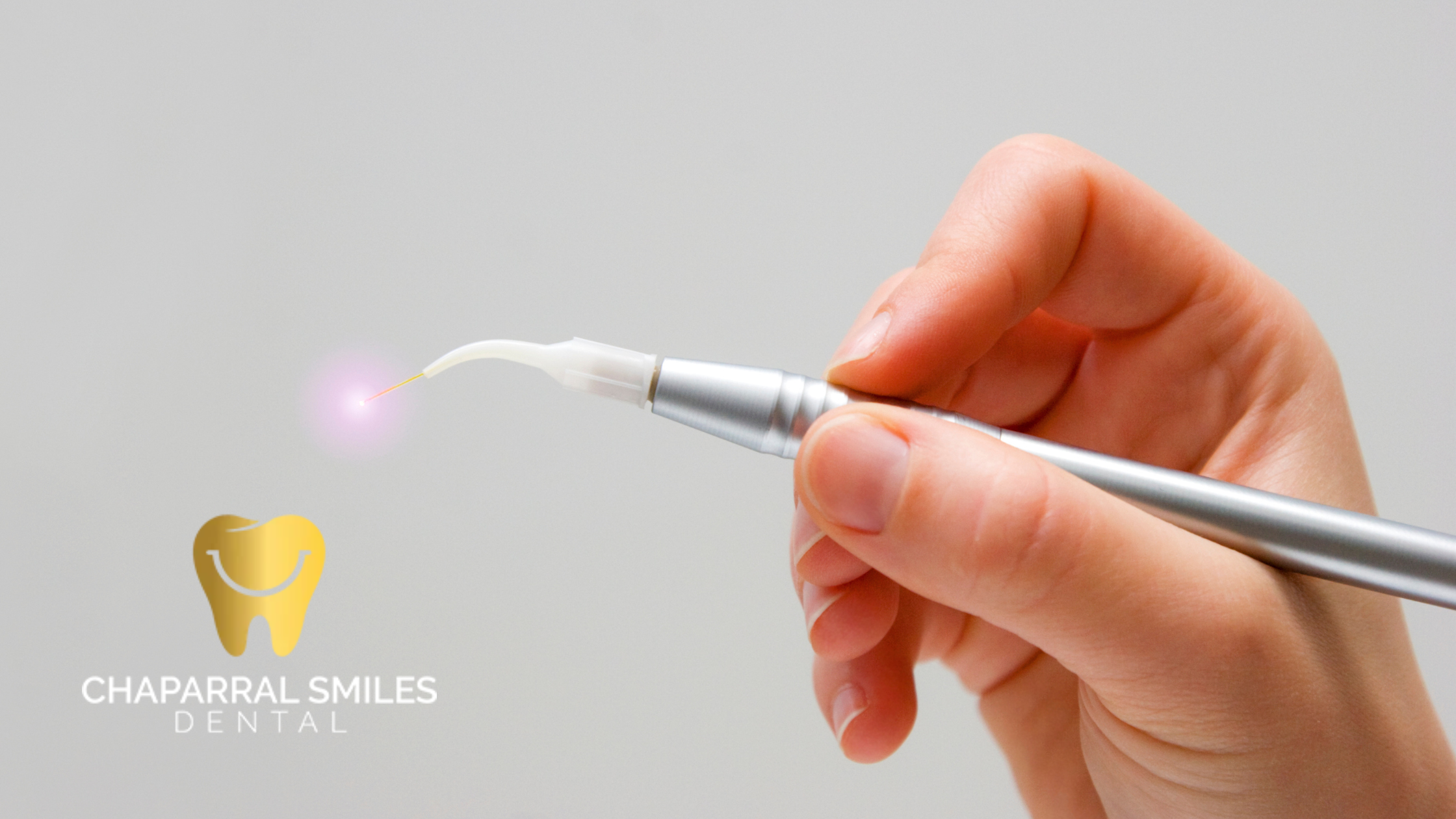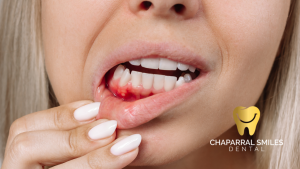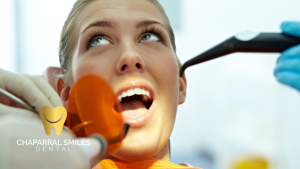Many people experience gum problems that can lead to discomfort and dental issues. If you are struggling with gum disease or seeking a less invasive treatment option, laser gum therapy may offer the minimally invasive solution you’re looking for.
This innovative procedure uses targeted laser technology to treat inflamed gums, remove infected tissue, and promote healing with minimal discomfort. In this post, you’ll learn about what laser gum therapy entails, its benefits, and the situations in which you may require this advanced treatment to improve your oral health.
Key Takeaways
- Laser gum therapy is a minimally invasive dental treatment that uses focused laser energy to target and remove infected gum tissue, reducing discomfort and promoting faster healing.
- It offers a safer and more comfortable alternative to traditional gum treatments, with fewer complications and faster recovery.
- This therapy is effective for conditions like gingivitis and periodontitis and can help restore gum health while minimizing the need for surgery.
The Science Behind Laser Gum Therapy
Laser gum therapy operates on the principle of using focused light energy to target and remove infected gum tissue without affecting the surrounding healthy tissue. This precision minimizes discomfort and promotes quicker recovery.
Laser-assisted periodontal therapy also helps eliminate harmful bacteria, fostering a healthier oral environment. You’ll find that this modern technology enhances the efficiency of traditional dental practices by streamlining procedures while producing effective outcomes.
“One of the key benefits of laser gum therapy is its ability to precisely target bacteria and inflamed tissues without disturbing nearby healthy structures, which greatly improves overall treatment outcomes.” – Dr. Kevin Kalin, Dentist in Calgary, AB
How Laser Technology Enhances Dental Care
The integration of laser technology in dental care has profoundly transformed treatments. By allowing for more precise incisions, lasers minimize bleeding and promote faster healing times.
Additionally, their ability to sterilize the treatment area helps reduce postoperative infections. You’ll experience less anxiety and discomfort compared to conventional procedures, making visits to the dentist much more manageable.
Comparing Traditional Treatments to Laser Methods
Traditional gum treatments, such as scalpel surgery and deep cleaning, often involve considerable discomfort, extended recovery times, and a higher risk of complications. In contrast, laser methods are less invasive and typically require minimal anesthesia, resulting in a more comfortable experience.
“Patients often remark on how much shorter recovery times are with laser gum therapy compared to traditional methods, particularly because the laser minimizes tissue trauma and reduces swelling nearly immediately.” – Dr. Kevin Kalin, Dentist in Calgary, AB
This innovative approach also translates to quicker recovery and less time in the dental chair.
| Traditional Treatments | Laser Methods |
| Invasive procedures with scalpels | Minimally invasive with laser precision |
| Higher pain levels post-treatment | Less discomfort and quicker recovery |
| Possible need for sedation | Often requires only local anesthesia |
| Longer healing time | Faster healing and reduced downtime |
The advantages of laser methods extend beyond comfort and healing times; they significantly enhance accuracy and effectiveness. Traditional methods may result in longer healing times and an increased likelihood of requiring antibiotics, potentially complicating recovery.
Opting for laser gum therapy ensures that you’re receiving state-of-the-art care while minimizing the risk of complications and promoting optimal oral health outcomes. As you take control of your dental care, consider the transition to these advanced methods for better long-term results.
Identifying the Need for Laser Gum Therapy
Recognizing the signs that indicate the need for laser gum therapy is vital for maintaining optimal oral health. If you experience persistent gum redness, swelling, or bleeding, these could be warning signs of gum disease.
Regular dental check-ups can aid in early detection, but being attuned to your own symptoms will allow you to seek timely intervention.
Key Signs Indicating Gum Issues
Pay attention to early signs such as persistent bad breath, receding gums, or loose teeth. You might also notice discomfort or sensitivity while eating or brushing.
These symptoms typically signify underlying gum issues that require immediate attention to prevent further complications.
Common Conditions Benefited by Laser Treatment
Laser gum therapy is particularly effective for conditions like gingivitis, periodontitis, and localized infections. Patients suffering from deep pockets between teeth and gums or bone loss due to gum disease can also see significant improvements with this treatment, as lasers target bacteria and inflamed tissues without affecting surrounding areas.
However, patients with advanced bone loss may still require conventional surgical intervention or bone grafting procedures.
Gingivitis is often the first stage of gum disease and is characterized by inflammation and bleeding. If left untreated, it can progress to periodontitis, a more severe condition that can result in tooth loss. Laser therapy targets diseased tissues and promotes the regeneration of healthy gum tissue.
Furthermore, those with localized infections can experience quick recovery, thanks to the precision of laser application, minimizing discomfort and reducing healing time significantly.
The Treatment Process: What to Expect
Understanding the treatment process of laser gum therapy can set you at ease. The entire procedure typically unfolds over a few appointments where your dentist evaluates your gum health and creates a tailored treatment plan designed just for you.
Pre-Treatment Consultations and Planning
Your journey begins with a consultation, where your dentist will assess the severity of your gum disease. You’ll discuss your medical history, any medications you may be taking, and your overall dental health.
Diagnostic imaging, such as dental X-rays or CBCT scans, may be required to develop a customized plan targeting your specific needs.
Step-by-Step Breakdown of the Procedure
The laser gum therapy can be broken down into a few imperative steps. This structured approach ensures the most effective treatment and elevates your comfort and safety during the session.
Step-by-Step Breakdown of the Procedure
| 1. Anesthesia Application | Your dentist may apply local anesthesia to ensure comfort during the procedure. |
| 2. Laser Application | The laser is carefully directed at the infected gum tissue, targeting the harmful bacteria without damaging healthy tissue. |
| 3. Tissue Healing | The laser promotes healing by stimulating tissue regeneration, reducing discomfort and decreasing recovery time. |
| 4. Follow-Up Care | You will be given specific instructions on at-home care and may have a follow-up appointment to assess healing. |
During the procedure, you’ll first receive local anesthesia to numb the area, ensuring you remain comfortable throughout. The dentist will then focus the laser on the infected gum tissue, removing debris and bacteria while preserving healthy tissue.
Post-treatment, you may experience minimal discomfort as the laser also encourages faster healing. Lastly, follow-up care will typically include guidance on maintaining good oral hygiene, vital for long-term gum health.
Recovery and Aftercare: Ensuring Optimal Results
Post-treatment recovery and aftercare are vital for enhancing the benefits of laser gum therapy. Following your procedure, your gums will require time to heal, and adhering to specific care routines will promote optimal results.
By following dentist-recommended practices, you can help decrease the risk of complications and support long-term gum health.
Immediate Post-Treatment Care
After laser gum therapy, you may experience mild discomfort or swelling in the treatment area. Applying a cold compress to the outside of your cheek can help reduce swelling and discomfort, while over-the-counter pain relievers can manage any lingering soreness.
“Don’t forget to avoid smoking or alcohol consumption during the healing period, as they can significantly slow the recovery process and increase the risk of gum tissue irritation.” – Dr. Kevin Kalin, Dentist in Calgary, AB
Eating soft foods, drinking plenty of water, and avoiding strenuous activities for the first few days will also help you recover more smoothly.
Long-Term Maintenance of Gum Health
Maintaining your gum health involves regular dental check-ups, daily brushing and flossing, along with the use such things as chlorhexidine mouthwash, as recommended by your dentist. Monitoring your gum condition and promptly addressing issues can effectively prevent future periodontal disease.
Regular cleanings at your dentist can also prevent plaque and tartar, thereby supporting your ongoing recovery.
Long-term maintenance of gum health means establishing a daily oral hygiene routine that you can stick to. Brushing your teeth at least twice a day and flossing once a day is necessary for removing plaque and preventing gum disease.
Additionally, scheduling dental check-ups every six months allows your dentist to monitor your gum health and provide professional cleanings to remove any stubborn plaque. Incorporating a balanced diet rich in vitamins and minerals can also promote gum healing.
Being proactive in your oral health practices ensures that the benefits of laser gum therapy last far into the future.
Myths and Misconceptions: Debunking Common Beliefs
Many misunderstandings surround laser gum therapy, leading to unwarranted fears and hesitations. Some people believe it’s an extreme option reserved only for severe gum disease, while in reality, it can be an effective treatment for various situations.
Others think laser therapy is unduly painful, when in fact, most patients report minimal discomfort, especially compared to traditional methods. Clarifying these myths can empower you to make informed decisions about your dental health.
Addressing Fears About Laser Procedures
Fear of pain, the unknown, and potential side effects can prevent you from exploring laser gum therapy. Many patients worry that laser procedures may be more painful than traditional treatments.
Modern dental lasers, such as diode or Nd:YAG lasers, have made these procedures safer, more targeted, and less painful. Plus, the precision of lasers often leads to quicker healing times compared to other treatments.
Clarifying Cost and Accessibility Concerns
Cost is frequently a significant factor when considering any dental treatment, and laser gum therapy is no exception. Expenses can vary depending on your location, the dentist’s expertise, and the extent of the treatment required.
Many dental insurance plans now offer coverage for laser therapy, making it more accessible for patients compared to traditional surgical methods that may carry higher costs and longer recovery times.
If cost remains a concern, discussing options with your dental provider is crucial. Many clinics offer payment plans or financing options that can ease the burden of upfront costs. Additionally, as laser technology continues to advance and become more widespread, you may find clinics offering competitive pricing for these procedures.
Thus, it’s beneficial to shop around or consult your insurance provider for potential coverage to help alleviate financial barriers.
Summing up
Drawing together the insights on laser gum therapy, you can recognize it as an effective treatment option for gum disease and related issues. This minimally invasive procedure can be a valuable option for patients who prefer less discomfort and quicker recovery than traditional surgical methods offer.
If you’re experiencing symptoms such as gum bleeding, swelling, or persistent bad breath, it’s advisable to consider laser gum therapy as an innovative solution tailored to improve your overall well-being and protect your smile.
If you’re experiencing symptoms of gum disease or want to learn whether laser gum therapy is right for you, the team at Chaparral Smiles Dental is here to help. Our clinic offers advanced periodontal treatments in a comfortable and patient-focused environment.
📍 Visit us in SE Calgary — conveniently located in Chaparral Valley — and take the first step toward healthier gums today.
👉 Contact us now to book your consultation or call us directly to speak with our friendly staff.
Reviewed by: Dr. Kevin Kalin





